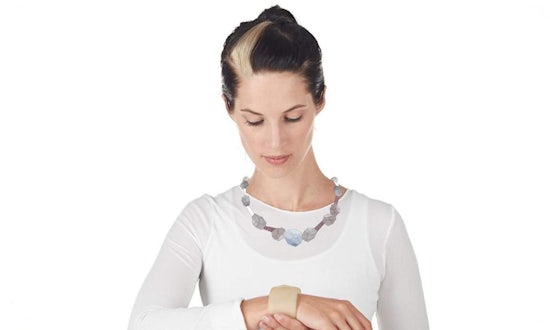Smart Heart necklace combines medicine and design
A collaboration between interior design, art and engineering students at Melbourne’s RMIT University has seen the creation of the ‘Smart Heart’ necklace which aims to collect, store and transmit cardiac data to medical professionals.

A concept sketch drawing of the Smart Heart necklace.
RMIT University interior design PhD candidate, Leah Heiss, Keely Macarow, Associate Professor in art, and Paul Beckett, Associate Professor in electronic engineering are working together on the project, which follows a three year Australian Research Council Linkage funded sound and emergency medicine project conducted by RMIT School of Art researchers in conjunction with St Vincent’s Hospital.
A $60,000 Gandel Philanthropy grant, awarded to the RMIT researchers, St Vincent’s Hospital and The Nossal Institute for Global Health, will contribute to the further development of the unisex jewellery piece.
Designed to be small, unobtrusive and visually appealing, Smart Heart will have the capacity to collect, store and remotely transmit cardiac data to medical professionals for analysis over an extended period of time.
Ms Heiss, a doctoral researcher at the RMIT Centre for Advanced Materials and Performance Textiles (CAMPT), says the grant provides a chance to work with St Vincent’s Hospital and the Nossal Institute for Global Health in a trans-disciplinary way.
“The Gandel Grant is an extraordinary opportunity to actualise a project for human health and wellbeing that traverses design, electronics and emergency medicine,” Ms Heiss says.
“The Smart Heart aims to provide an alternative to the current cardiac Holter monitor, which is very bulky and uncomfortable to wear.”
The necklace is now in its developmental phases, with woven structures from conductive fibres being generated to replace the need for bulky wires and electronics.
Avant-garde in nature, the wearable device will also store the patient’s emergency contact information and medical history so that, in the event of a heart attack, emergency staff can easily access the patient’s information and recent heart wave forms.
The project is set to run through 2015, with eventual prototyping and testing phases forecast with groups of patients who are experiencing heart arrhythmias.
“The new neckpiece allows the user to wear it for a prolonged period of time without experiencing the discomfort or stigma that may be associated with wearing medical devices,” Ms Heiss says.
Pioneering jewellery design isn’t new to the RMIT team: one of their previous projects is now part of a major exhibition at the Powerhouse Museum in Sydney.
SOS Jewellery, developed by Ms Heiss, Ms Macarow and Mr Beckett, includes bracelets that identify allergies and identity in times of crisis.
Ms Heiss’ Diabetes Jewellery range, comprising of neckpieces and rings that administer nano-engineered insulin through the skin for diabetics, are also on display.
Running until September this year, A Fine Possession: Jewellery and Identity showcases many rare and exquisite jewellery artefacts from antiquity to the present.






















